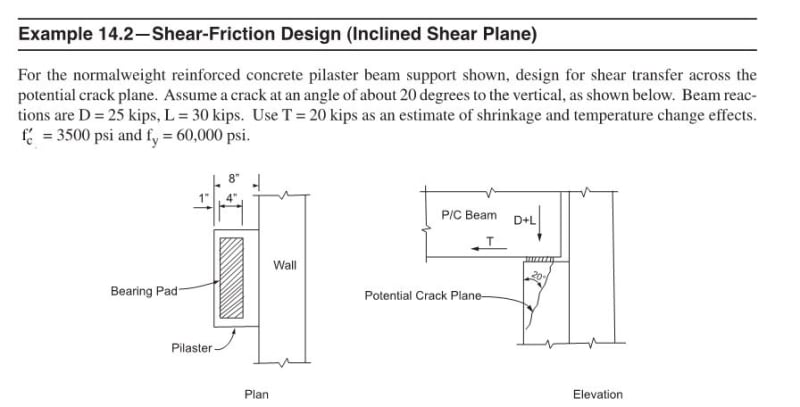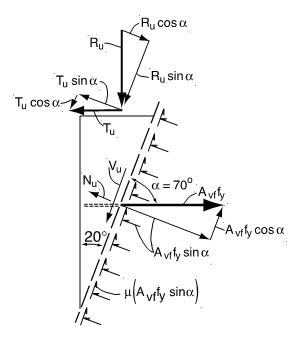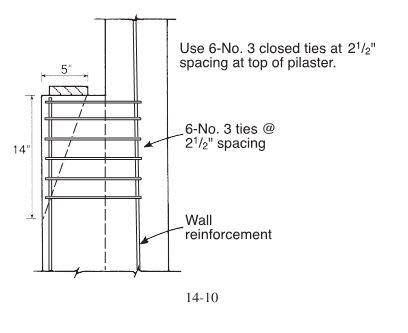NZStrctEng said:
shear friction has always confused me
I hear 'ya. I lost the first half of my thirties scratching my head over shear friction and concrete shear in general. Shoulda been chillaxin' with the kids.
NZStrctEng said:
do the stirrups not need to be developed either side of the failure plane?
I agree, the stirrups do need to be developed either side of the failure plane. You'll have to come along on a short walk with me in order to get the answer to this (my answer at least). If you go back to looking at just plain old beam shear reinforcing, most codes have a provison for allowing small diameter stirrups to be considered fully developed at the tangency pont of the hook if they are hooked around a flexural bar. In the US, small diameter = #5 or smallar. So far so good. I would submit that the situation here is analagous with the cage just turned 90 degrees. So, in my opinion, part of the design here would be ensuring the use of appropriately "small" wall/column ties. You'll get that naturallly in columns of coure. In walls, you'd have a very high chance of getting small bars too but, I suppose, might occassionally see #6 bar etc. The business with the stirrup development cheat comes up a fair bit in practicce. I've always wished that they would generalize the concept a bit more in the code.
NZStrcEng said:
Is 20 degrees a rule of thumb?
I don't believe that it is. I've taken the intent of this stuff to be that failure could occur over any potential angle plane and that it's up too the judgment of the engineer to satisfy themselves that things are kosher. It's tempting to think that the shear plane would be oriented along the same axis as the load resultant but, in my experience, that not usually the case. It may well be a good place to start the investigation though, particularly if it's being done by hand.
NZStrctEng said:
no allowance for depth of section/ concrete shear strength, under these assumptions wouldn’t a 0 degree (vertical) shear failure be critical given it would be equal to your applied load?
I agree with this as well. I believe this failure mode to be irrelevant in the absense of a lateral load. It's probably best studied by lookging at a few cases:
1) Just like the sketches above, there is a lateral load as a result of supported member restraint ect. In this case, the shear friction failure mode definitely applies.
2) In OP's case, I would argue that there is still a lateral load at the bottom of the transferred column. In this situation, however, that lateral load is
internal, originating from the non-vertical primary compression struts that arise in column walk situations. So I think that OP was on the right track in thinking of the bursting model here. As I said above, however, I belive that strut and tie modelling is the most appropriate way to look at this particular condition. Conceived of in this manner, the required reinforcing essentially becomes the tie and the failure wedge becomes the node. At least that's one way to do it. I'd probably be considering slab rebar to be the tie and would thus adjust the model a built to suit.
3) Imagine that the low wall was just supported on a plain old foundtion footing. In this case, I think that one could argue that there is not\ lateral load on the connection and, as you've said, the shear plane woul be zero degrees (vertical). Obviously, capacity for that would be very high and I struggle to think of a case where I'd bother to consider it.
I like to debate structural engineering theory -- a lot. If I challenge you on something, know that I'm doing so because I respect your opinion enough to either change it or adopt it.



